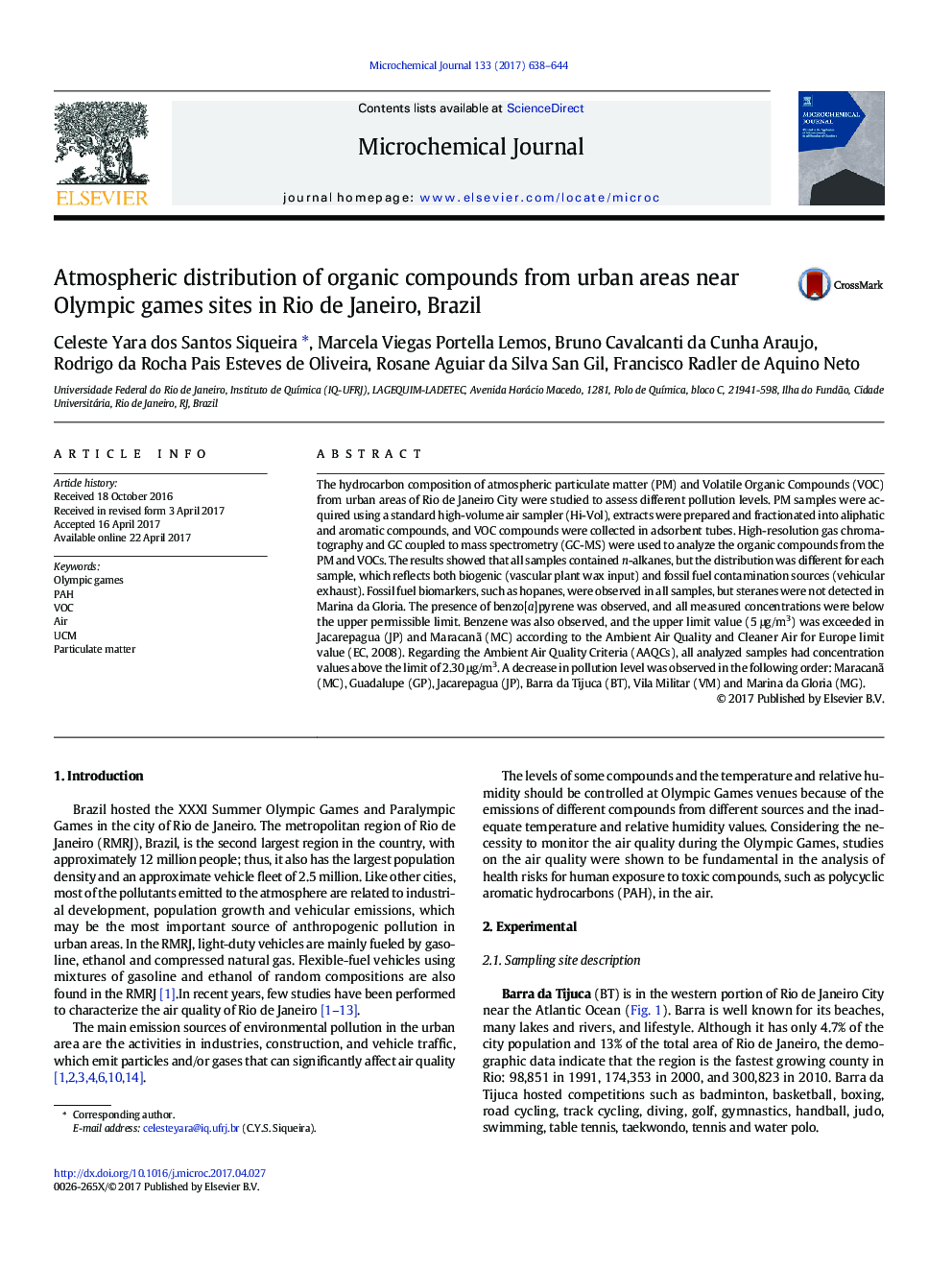| Article ID | Journal | Published Year | Pages | File Type |
|---|---|---|---|---|
| 5139081 | Microchemical Journal | 2017 | 7 Pages |
Abstract
The hydrocarbon composition of atmospheric particulate matter (PM) and Volatile Organic Compounds (VOC) from urban areas of Rio de Janeiro City were studied to assess different pollution levels. PM samples were acquired using a standard high-volume air sampler (Hi-Vol), extracts were prepared and fractionated into aliphatic and aromatic compounds, and VOC compounds were collected in adsorbent tubes. High-resolution gas chromatography and GC coupled to mass spectrometry (GC-MS) were used to analyze the organic compounds from the PM and VOCs. The results showed that all samples contained n-alkanes, but the distribution was different for each sample, which reflects both biogenic (vascular plant wax input) and fossil fuel contamination sources (vehicular exhaust). Fossil fuel biomarkers, such as hopanes, were observed in all samples, but steranes were not detected in Marina da Gloria. The presence of benzo[a]pyrene was observed, and all measured concentrations were below the upper permissible limit. Benzene was also observed, and the upper limit value (5 μg/m3) was exceeded in Jacarepagua (JP) and Maracanã (MC) according to the Ambient Air Quality and Cleaner Air for Europe limit value (EC, 2008). Regarding the Ambient Air Quality Criteria (AAQCs), all analyzed samples had concentration values above the limit of 2.30 μg/m3. A decrease in pollution level was observed in the following order: Maracanã (MC), Guadalupe (GP), Jacarepagua (JP), Barra da Tijuca (BT), Vila Militar (VM) and Marina da Gloria (MG).
Related Topics
Physical Sciences and Engineering
Chemistry
Analytical Chemistry
Authors
Celeste Yara dos Santos Siqueira, Marcela Viegas Portella Lemos, Bruno Cavalcanti da Cunha Araujo, Rodrigo da Rocha Pais Esteves de Oliveira, Rosane Aguiar da Silva San Gil, Francisco Radler de Aquino Neto,
